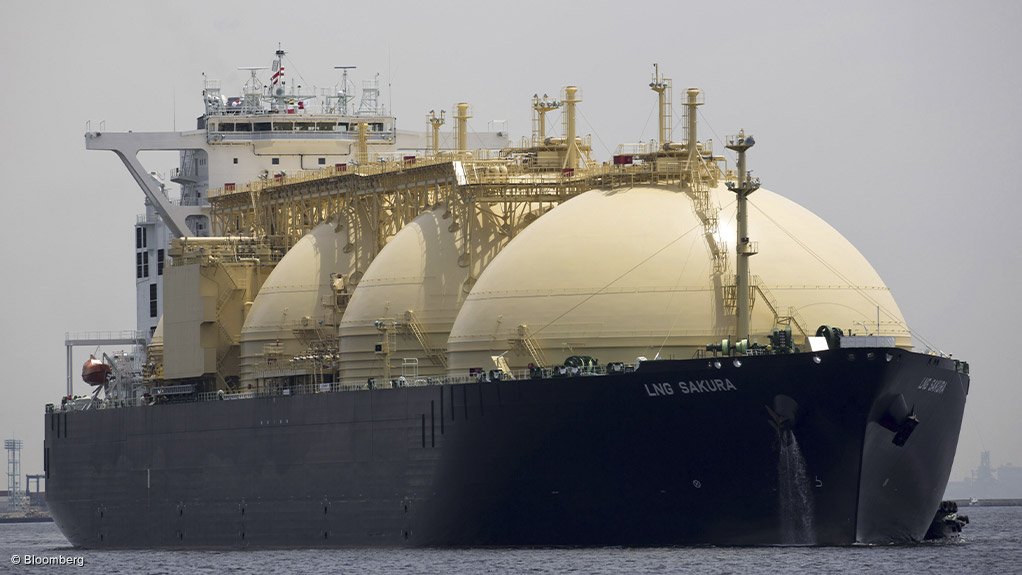No plan yet for public hearings into gas-heavy draft IRP 2023


The scaled-up gas-to-power capacity allocation in the draft IRP would initially require LNG imports
The Department of Mineral Resources and Energy (DMRE) has belatedly released the background technical information that has been used to inform the assumptions included in the draft Integrated Resource Plan of 2023 (IRP 2023) and will host two virtual workshops this month to provide greater insight into the plan.
However, no formal public hearings are scheduled either ahead of or after the February 23 deadline for the submission of written comments, despite serious and growing concern over the plan’s assumptions and outcomes.
The so-called draft IRP 2023 was published for public comment only on January 4 and the DMRE’s current intention is to present a revised version (taking account of comments received) to the social partners at the National Economic Development and Labour Council (Nedlac) in April, before seeking Cabinet approval in May for the Gazetting of the final version.
To meet the deadline – which would be unprecedented, given that it took five years, from 2015 to 2019, to secure approval for the prevailing IRP 2019, whose assumptions were, thus, considered to be out of date from day one – only virtual workshops have been scheduled for January 18 and 31 rather than the provincial physical hearings that accompanied the previous update.
Given the significant changes outlined, however, there are already suggestions that the written comment period may have to be extended and that the process should include an opportunity for stakeholders to make oral submissions.
Director-general Jacob Mbele has indicated that some commentators could be invited to make presentations during the two workshops but made no commitment to broadening these into formal public hearings, arguing that it had become urgent to update the IRP considering changes to circumstances and assumptions.
It is precisely these assumptions, however, that several stakeholders are already starting to criticise and question; questioning that was intensified by the fact that the Gazette Notice containing the document was published in the absence of the data underpinning the assumptions used.
There has been criticism, for instance, of the draft IRP 2023’s assumption of ongoing loadshedding until at least 2027 and its indication that the shortfall can be overcome only once there was 7 220 MW of new gas-to-power (GTP) capacity built and that these dispatchable plants should operate at a “high utilisation factor”, of over 85% (86.71% to be precise, as outlined in Annexure B).
GAS-TO-POWER SCALE-UP
This outcome represents a significant scale-up from the IRP 2019 both in terms of assumed GTP capacity and future gas volumes, which are assumed to be low in the current version, with the gas plants expected to offer flexibility rather than near consistent supply.
The cost implications are not fully clear even after the publication of the technical cost assumptions used, which are also open to contestation.
Mbele acknowledged that the plants would, at least initially, operate using imported liquefied natural gas (LNG), which would expose the electricity supply industry to a foreign-exchange (forex) risk that had hitherto been marginal.
On January 10, the State-owned Transnet National Ports Authority announced that it had appointed a consortium comprising Vopak Terminal Durban and Transnet Pipelines as the preferred bidder to develop and operate LNG terminal at the Port of Richards Bay’s South Dunes Precinct.
There was also no immediate clarity in the IRP 2023 regarding the gas-supportive infrastructure requirement, or the possible cost implications of building such infrastructure.
The increased weighting of GTP in the draft arises principally from the hard wiring of two Ministerial determinations into one of five scenarios outlined for ‘Horizon 1’, which covers the period from 2024 to 2030: a 3 000 MW allocation for GTP arising from investments procured from independent power producers; and a 3 000 MW allocation related to a determination, secured in 2023, for an Eskom GTP project earmarked for Richards Bay, in KwaZulu-Natal.
The 1 220 MW new GTP balance is allocated to the Karpowership projects, which the plan assumes are proceeding, but which have since lost their grid-access allocations after failing to achieve financial close by the December 31, 2023, deadline.
This hard wiring, together with an assumption of lower demand for the period, has had a knock-on effect for the other technologies included in the plan, most notably the allocation for renewable energy.
The big loser is new wind with an allocation to 2030 of only 4 468 MW, compared with 17 742 MW in the prevailing plan. The allocation for new solar photovoltaic (PV), meanwhile, falls to 3 615 MW, from 8 288 MW, but the technology is likely to capture the lion’s share of the 6 300 MW allocation for ‘distributed generation’.
CONSTRAINED RENEWABLES?
While the DMRE denies that renewables have been constrained in the model used to finalise the technology allocations, the Ministerial determination catering for the procurement of 14 771 MW of new wind and solar PV does not appear to be as embedded as the GTP determinations.
In other words, it is likely that renewables have been constrained, presumably on the assumption that there is insufficient grid capacity to accommodate them - an assumption arguably amplified by Eskom’s current conservative approach to grid-maximising instruments such as curtailment, which has not yet been implemented to unlock immediate grid capacity for renewables projects.
The net effect is that GTP has secured a large capacity allocation in the plan. And given and assumed utilisation rate of over 85%, these plants are also poised to be providing a far larger share of actual electricity by 2030, crowding out other potentially cheaper and less forex-exposed electrons.
Besides the plan’s large GTP allocation, stakeholders have also started to question the plan’s assumption on demand, loadshedding and the energy availability factor (EAF) of the Eskom coal fleet.
While it is widely accepted that South Africa’s low growth rate, underpinned by loadshedding, has moderated demand, it is unclear whether the draft IRP 2023 takes account of the increasing role that electricity will play, directly and indirectly, in both mobility and industrial processes, including electric vehicles and industrial and transport processes that could shift progressively to green hydrogen.
Likewise, questions will be asked about the EAF assumptions, even though these depart materially from the wholly unrealistic 75% outlined in the IRP 2019; the draft outlines a scenario where the EAF climbs from about 51% currently to between 66% and 69%.
There are also serious questions about the new coal decommissioning schedule outlined in the document, particularly as it hinges either on Eskom making massive investments to ensure compliance with legally stipulated minimum emissions standards, or ongoing concessions, which carry serious health consequences.
The draft IRP 2023 fails to solve this problem, concluding only that, unless it is addressed, 16 000 MW of coal capacity would have to be shut immediately and up to 30 000 MW by April 2025.
Given all these concerns, there is likely to be a concerted push for greater public input, not least so as to ensure that there is greater transparency and accountability when the DMRE redrafts the document to reflect the public comments.
Article Enquiry
Email Article
Save Article
Feedback
To advertise email advertising@creamermedia.co.za or click here
Comments
Press Office
Announcements
What's On
Subscribe to improve your user experience...
Option 1 (equivalent of R125 a month):
Receive a weekly copy of Creamer Media's Engineering News & Mining Weekly magazine
(print copy for those in South Africa and e-magazine for those outside of South Africa)
Receive daily email newsletters
Access to full search results
Access archive of magazine back copies
Access to Projects in Progress
Access to ONE Research Report of your choice in PDF format
Option 2 (equivalent of R375 a month):
All benefits from Option 1
PLUS
Access to Creamer Media's Research Channel Africa for ALL Research Reports, in PDF format, on various industrial and mining sectors
including Electricity; Water; Energy Transition; Hydrogen; Roads, Rail and Ports; Coal; Gold; Platinum; Battery Metals; etc.
Already a subscriber?
Forgotten your password?
Receive weekly copy of Creamer Media's Engineering News & Mining Weekly magazine (print copy for those in South Africa and e-magazine for those outside of South Africa)
➕
Recieve daily email newsletters
➕
Access to full search results
➕
Access archive of magazine back copies
➕
Access to Projects in Progress
➕
Access to ONE Research Report of your choice in PDF format
RESEARCH CHANNEL AFRICA
R4500 (equivalent of R375 a month)
SUBSCRIBEAll benefits from Option 1
➕
Access to Creamer Media's Research Channel Africa for ALL Research Reports on various industrial and mining sectors, in PDF format, including on:
Electricity
➕
Water
➕
Energy Transition
➕
Hydrogen
➕
Roads, Rail and Ports
➕
Coal
➕
Gold
➕
Platinum
➕
Battery Metals
➕
etc.
Receive all benefits from Option 1 or Option 2 delivered to numerous people at your company
➕
Multiple User names and Passwords for simultaneous log-ins
➕
Intranet integration access to all in your organisation

















